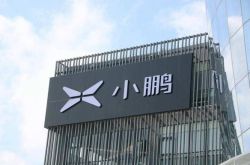Revolutionary Shakeup! The Rise and Fall of China's AI Startups Unveils a New Landscape of Five Dominant Players
![]() 05/14 2025
05/14 2025
![]() 630
630
After two years of rapid evolution, the competitive landscape for large AI models is consolidating at an unprecedented pace.
Internationally, the grand finale of the large model competition has narrowed down to five key players: OpenAI, Anthropic, Google, Meta, and xAI. Domestically, DeepSeek's breakthrough has significantly reshaped the competitive landscape, emphasizing that intelligence level trumps traffic and serves as the true cornerstone for international competitiveness. Concurrently, strategic adjustments by companies like Baichuan and Lingyi Wanwu have naturally dissolved the narrative of "China's six rising AI startups." A new quintet has quietly emerged, comprising ByteDance, Alibaba, Jieyue Xingchen, Zhipu AI, and DeepSeek, all distinguished by their deep accumulation and continuous innovation in foundational models.
Behind these transformations lies a fundamental truth: intelligence enhancement remains the cornerstone on the path to Artificial General Intelligence (AGI).
This year, DeepSeek has underscored a pivotal point: the model is the application. In the realm of advanced AI technology, phased products struggle to create insurmountable barriers. Any innovation in products or business models pales in comparison to advancements in intelligence.
Today, let's delve into the new landscape of China's large model industry.
/ 01 / The "Hundred Models War" Concludes, Giving Rise to the "Five Powers Contend"
First, let's examine the global scenario. Late last year, Sequoia Capital published its report "AI in 2025: Building Blocks Firmly in Place," predicting the trajectory of AI development in the US by 2025. The report concluded that the large model competition had entered its final phase, with only five contenders left standing: Microsoft/OpenAI, Amazon/Anthropic, Google, Meta, and xAI.
According to Sequoia, each of these five companies boasts unique strengths:
- Google excels in vertical integration, being the only company with independently developed top-tier chips, its own data centers, and a robust research team.
- OpenAI's primary advantage lies in its brand recognition. Revenue-wise, OpenAI has reportedly surpassed $3.6 billion.
- Anthropic stands out for its talent pool, attracting some of the world's top AI scientists.
- xAI is a leader in data center construction, having built a 100,000 GPU Colossus cluster at record speed.
- Meta focuses on open-source strategies, being the only tech giant in the industry to adopt such an approach. As the development of cutting-edge technologies slows, Meta will leverage its open-source models to rapidly disseminate new features.
This trend is not coincidental; the domestic market mirrors a similar development. The emergence of DeepSeek has not only reshaped the competitive dynamics between China and the US but also disrupted the domestic large model landscape overnight.
Among China's "six rising AI startups," many have already begun strategic adjustments and transformations. For instance, Baichuan and Lingyi Wanwu have abandoned pre-trained large models, instead focusing on medical AI and comprehensive industry implementation. MiniMax has scaled back its To B business, concentrating on overseas markets for C-end video generation and other scenarios.
Conversely, we observe increased investments in the large model industry, with technology giants boosting their commitments, and leading large model companies attracting additional funding from investors.
According to a report by China Merchants Securities, ByteDance's capital expenditure is projected to reach 160 billion yuan by 2025, doubling from 80 billion yuan last year. In February this year, Alibaba announced plans to invest over 380 billion yuan over the next three years in cloud and AI hardware infrastructure, surpassing the total investment of the past decade.
Regarding startups, leading companies have continued to attract funding over the past year, but their development paths have diverged significantly. This divergence is evident not only in the differentiation between foundational models (Zhiyuan, Jieyue Xingchen) and vertical applications (like Dark Side of the Moon, Minimax, Baichuan, Lingyi Wanwu) but also in the capital market's investments.
Among the startups, Raven believes the most noteworthy are the "two powerhouses in the north and south" – Shanghai-based Jieyue Xingchen and Beijing-based Zhipu AI, both supported by state-owned assets and committed to foundational model research and development. They completed large-scale financing rounds at the end of last year and the beginning of this year, respectively.
Mirroring the "five powers contend" in the US, the true power players in China's domestic large model market have evolved from the "six rising AI startups" to a "new quintet" pattern centered on foundational models: ByteDance, Alibaba, Jieyue Xingchen, Zhipu AI, and DeepSeek.
/ 02 / Two Key Themes in the "Warring States" Era of Large Models
As the large model competition enters its final phase, the technical focal points are also evolving. The next stage of foundational model competition will primarily hinge on intelligence ceilings and multimodal capabilities.
First, on the path to AGI, intelligence enhancement remains paramount.
The reason is straightforward: the proliferation of large model applications is inextricably linked to the capability boundaries of foundational models. Using the "Barrel Principle" as a metaphor, if AGI is a barrel, the level of foundational models determines the overall integrity of the barrel, setting the upper limit of its capacity. If the bottom of the barrel is thin or has numerous short boards, it ceases to function as a barrel. Therefore, only by continually pushing the intelligence boundaries of foundational models can we enhance the barrel's overall capacity and provide a stable ecological environment for large model applications.
Particularly in the implementation of Agents, model capability gaps are further amplified. Since Agents require long-distance, multi-step reasoning, even a 5-10% improvement in the model can lead to a multiplied leading effect.
Moreover, the model itself represents the largest application. For model companies, the capabilities of foundational models are highly correlated with user-end competitiveness. This explains why ChatGPT remains the AI application with the highest traffic.
Earlier this year, DeepSeek emerged as a dark horse, quickly eclipsing the traffic advantage that ByteDance's Doubao had painstakingly built, relying solely on stronger model capabilities. In March, DeepSeek's chatbot surpassed 16.5 million monthly visits.
Apart from model intelligence, multimodal technology is another decisive factor in this large model finale.
Zhang Hongjiang, founding director of the Beijing Academy of Artificial Intelligence and a foreign academician of the National Academy of Engineering of the United States, once posited that the multimodal large model is the ultimate model for AGI.
In Zhang's view, a unified multimodal large model can solve all comprehension problems. Simply put, 80% of human information is obtained through vision, which encompasses multi-dimensional information such as objects, brightness, color, and spatial relationships. Speech, on the other hand, is one-dimensional. Thus, the volume of visual information far surpasses other modalities. The value of multimodal data lies in elevating the upper limit of intelligence.
Especially in AI implementation, multimodal technology plays a crucial role. For instance, only a multimodal large model can enable the development of a general-purpose robot capable of self-planning and autonomous decision-making.
Traditionally, robot models are entirely human-designed, breaking down complex tasks into "simple tasks" and manually designing each one, with rules driving motion planning. This is a very rudimentary model.
With the language large model and the world large model, we can decompose complex tasks into "simple tasks" through a multimodal large model, understand human commands, and further break them down into machine actions via the visual model, thereby completing the process from complex to simple to machine actions.
In summary, the "breakthrough" of a unified multimodal large model is expected to accelerate the advent of the AGI singularity. Under these two technical focal points, let's explore the advantages of these finalists in the large model competition.
/ 03 / The Strengths of the "New Quintet"
Ultimately, competition in artificial intelligence, especially large models, is a high-stakes game that tests each company's comprehensive strength. It demands solid technical prowess, substantial resource investment, high-density talent deployment, and unwavering determination and perseverance. In Raven's view, China's five AI powers can be categorized into three camps: the "Big Factory Faction" represented by ByteDance and Alibaba; the "National Team" represented by Jieyue Xingchen and Zhipu AI; and the "Special Forces" represented by DeepSeek.
First, let's discuss ByteDance, undoubtedly the most resolute company in investing in AI in China over the past year.
ByteDance's investment in AI is evident not only in scale but also in commitment. Founder Zhang Yiming has invested significant energy in AI, akin to an entrepreneur. ByteDance has established new AI organizations, Flow and Seed, independent of the original organizational structure, and formulated a new assessment method for the AI R&D team.
Currently, ByteDance has invested in the full chain, spanning the computing power chip layer, cloud computing layer (Volcano Engine), model development layer, and application layer. By the end of 2024, its flagship product, Doubao, had become the AI application with the highest daily active users in China.
Alibaba's strategy aligns somewhat with Meta, with a stronger focus on open-source. Alibaba was not only the first to adopt an open-source strategy but also boasts the most comprehensive open-source models in China. At the application level, it also has star applications like Quark and DingTalk.
Next, let's turn to Jieyue Xingchen, one of the two powerhouses in the national team. Established in Xuhui, Shanghai, in April 2023, Jieyue Xingchen is undeniably a star enterprise heavily invested in by Shanghai. At the end of last year, Jieyue Xingchen announced the completion of Series B financing, totaling hundreds of millions of dollars, with core investors including Shanghai State-owned Capital Investment Co., Ltd., and its funds.
In terms of capabilities, Jieyue Xingchen excels in model performance and commercialization. Within two years of its establishment, it has cumulatively released 22 self-developed foundational models, 16 of which are multimodal, accounting for over 70%. It has ranked first in multiple authoritative domestic and international rankings, earning the title of the "king of multimodal competition" in the industry.
Regarding commercial exploration, Jieyue Xingchen has a clear strategy and path. According to Jiang Daxin, founder and CEO of Jieyue Xingchen, who mentioned in a previous interview, Jieyue Xingchen views intelligent terminal Agents as the key focus for large model technology implementation and has secured leading customers in four critical tracks: smart cars, smartphones, IoT, and embodied intelligence, including Geely, Oppo, and others.
Similar to Jieyue Xingchen, Zhipu AI is also a worthy member of the national team for large models, with a comprehensive model layout and a clear commercial path. According to company disclosures, Zhipu AI's business maintained rapid growth in 2024, with commercial revenue increasing by over 100% and the average daily token consumption of the platform surging by 150 times. Recently, the company announced the initiation of an IPO, becoming the first large model startup to formally embark on the IPO process.
Compared to the above four, DeepSeek's success path is relatively unique, focusing on language models, firmly adhering to the open-source route, and embracing extreme engineering optimization.
Looking back, the model companies that have qualified for the final round share a common denominator: money + people.
In terms of funding, ByteDance and Alibaba need no introduction, and DeepSeek also has the support of China's largest quantitative fund company, HFT Quant. Zhipu AI and Jieyue Xingchen also maintain a steady financing rhythm. However, more crucial than funding is these companies' commitment to talent development. For instance, Wu Yonghui, head of ByteDance's AI R&D department Seed, once led projects such as Neural Machine Translation (GNMT) and RankBrainn at Google.
Beyond technology giants, the talent density of large model companies cannot be overlooked. Take Jieyue Xingchen as an example; its chief scientist, Zhang Xiangyu, is a post-90s scientist who participated in writing the ResNet (Residual Network) paper, considered one of the key papers in the field of artificial intelligence in recent years, with over 250,000 citations.
In the long run, the path to AGI is a competition of comprehensive capabilities, with capital and talent being the most critical factors. The reason is simple: capital represents the resources you can mobilize, while talent determines the height a company can reach.
Now, the curtain of the large model finale has risen. We eagerly await to see who will ultimately emerge victorious.





